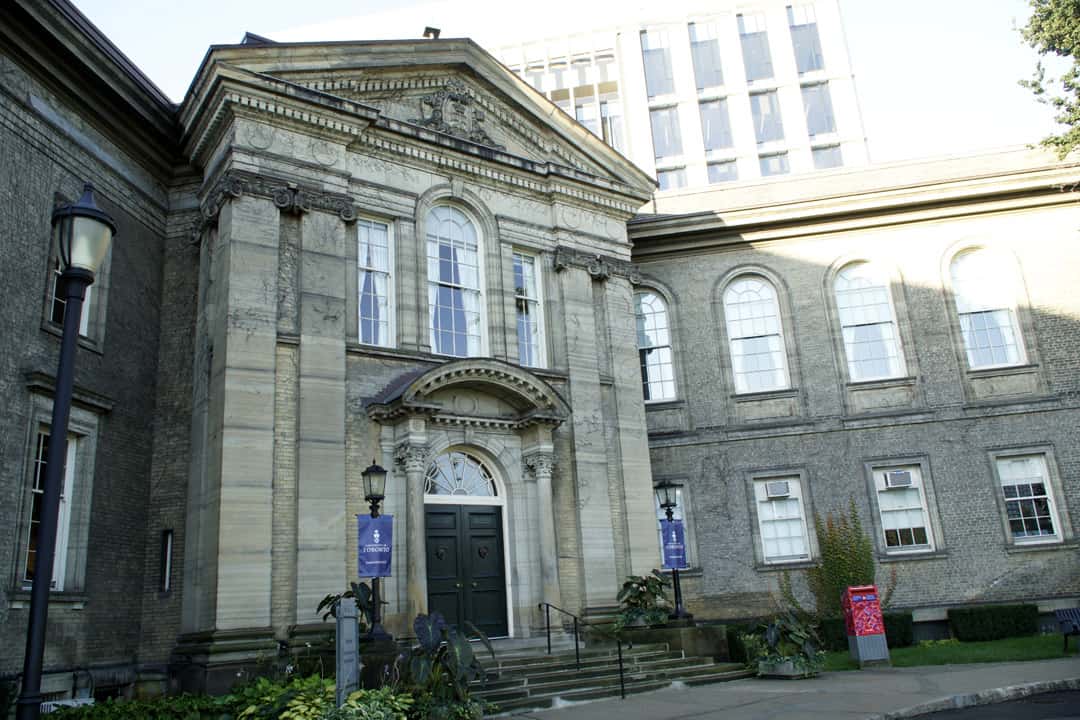The Business Board of U of T’s Governing Council held its first meeting of the 2018–2019 academic year on October 9. Among the 18 items discussed at Simcoe Hall were a semi-annual update on investment performance, the annual endowment financial report for the previous academic year, and the status of capital projects costing over $2 million.
Comprised of 41 members, the Business Board is responsible for monitoring the cost-effectiveness of the university’s investments and for approving its business policies.
Semi-annual report on investment performance
The semi-annual report on investment performance was presented by Darren Smith, the President and Chief Investment Officer of the University of Toronto Asset Management Corporation (UTAM). UTAM is responsible for managing the university’s pension funds, endowment pool, and Expendable Funds Investment Pool (EFIP). The assets in these profiles total just under $10 billion.
All three portfolios’ actual returns have underperformed against the university’s targets since the start of 2018. The actual returns for pension and endowment portfolios were 2.2 per cent each, against their 3.1 per cent targets. The actual return for the EFIP was 0.9 per cent against a 1.1 per cent target. Smith attributed this to “an unfavourable capital market environment.”
Over a one-year basis and a five-year basis, UTAM’s actual returns for all three portfolios have outperformed target returns.
Smith believes that in the next five to 10 years, outperforming targets will be more challenging. “We’re very thoughtful about the current market environment,” he said. “Frankly, we’ve been surprised over the incredible run we’ve seen over the last couple of years. We keep expecting that markets will cool off, and that will happen at some point.”
Sheila Brown, U of T’s Chief Financial Officer and a UTAM board member, added, “It is our expectation that when the markets go down, we will go down with them.” She said that the Business Board should focus on UTAM’s long-term assets and positions when the markets go down. “[This is] an important lesson for us to keep in mind collectively as we go through what will inevitably be a downturn in the market that I think everyone is sitting waiting for.”
Annual endowment financial report
U of T currently has over 6,260 individual endowment funds totalling $2.5 billion market value, an increase of $124 million from the 2017 report. Of the $124 million increase, $39 million is from endowed donations, $14 million is from the university’s unrestricted funds, and $181 million is from investment income. There is a $25 million deduction for fees and expenses and an $85 million allocation for spending.
Each endowment has its own terms and conditions, which define the parameters of how the funds should be allocated and/or invested, as well as how the investment returns may be spent. For “the donated funds themselves and the funds that are designated as endowments, we cannot spend that original capital — we can only spend the investment return,” said Brown.
Scholarships constitute a large portion of the endowment funds, but in some cases, particularly due to tuition rates rising faster than the inflation rate, they may no longer able to provide adequate financial support. According to David Palmer, U of T’s Vice-President of Advancement, U of T’s “policies preserve purchasing power of endowments relative to the original gift, not to the purpose.”
Capital projects
There are currently 95 buildings across all three campuses under design and construction, totalling over $1.4 billion in costs. The 88 UTSG projects total $823,882,204; the four UTSC projects $279,563,702; and the three UTM projects $300,757,155.
Scott Mabury, U of T’s Vice-President of Operations, highlighted U of T’s commitment to increased energy efficiency. “We’ve made a pledge to be 37 per cent below our 1990 greenhouse gas emission levels by 2030. When we did that, there was a thing called cap and trade in Ontario that said that was the law. It seemed like a safe commitment for the president to make. You understand how that has changed.”
Mabury said that seeking more energy efficient projects is “the right thing to do from a philosophical, from a practical, from an environment, and from an energy cost perspective… we don’t pay as much, so there’s an economic return.”
In camera items discussed include labour agreements between the university and both the Carpenters and Allied Workers, Local 27 and the International Brotherhood of Electrical Workers 353. Mabury also updated the board on a “forthcoming capital initiative at the Toronto Waterfront,” which may refer to the university’s partnership with MaRS to lease 24,000 square feet of the Waterfront Innovation Centre.
— With files from Matias Gutierrez


